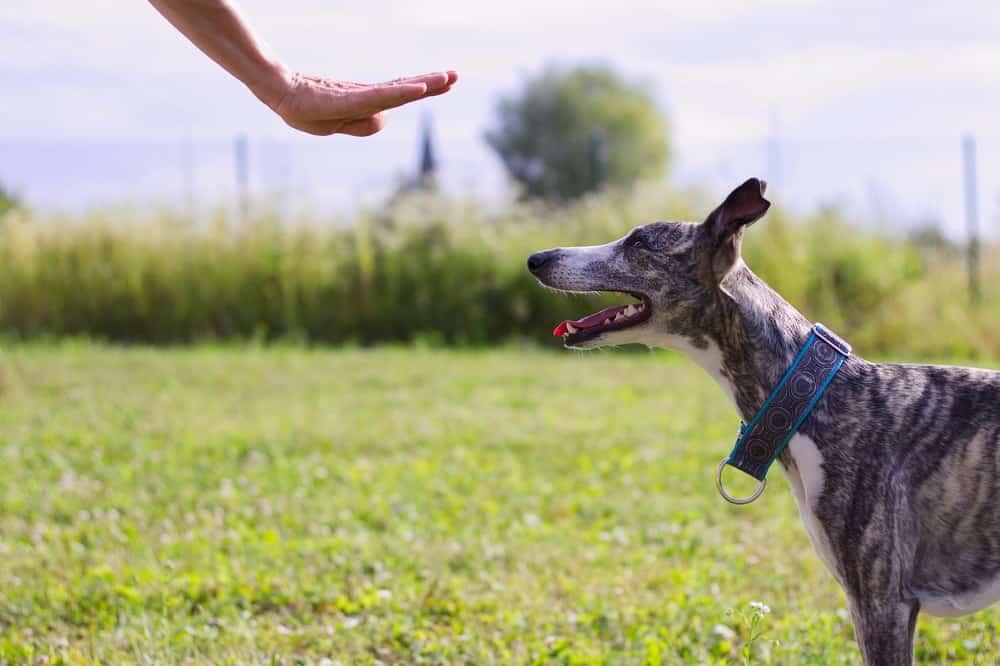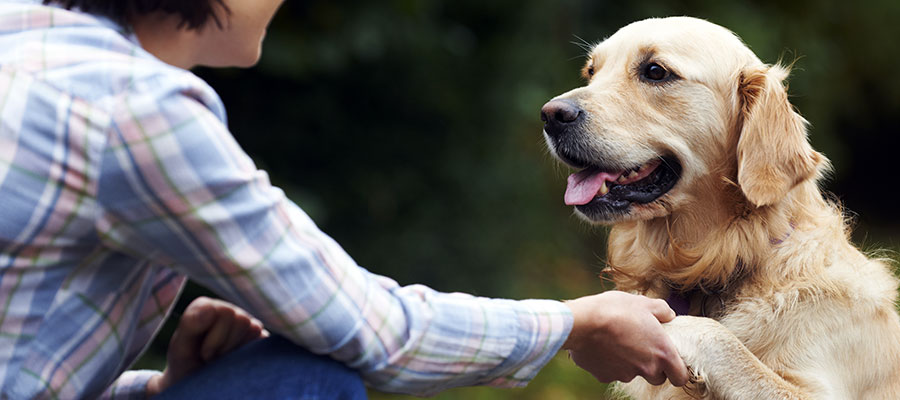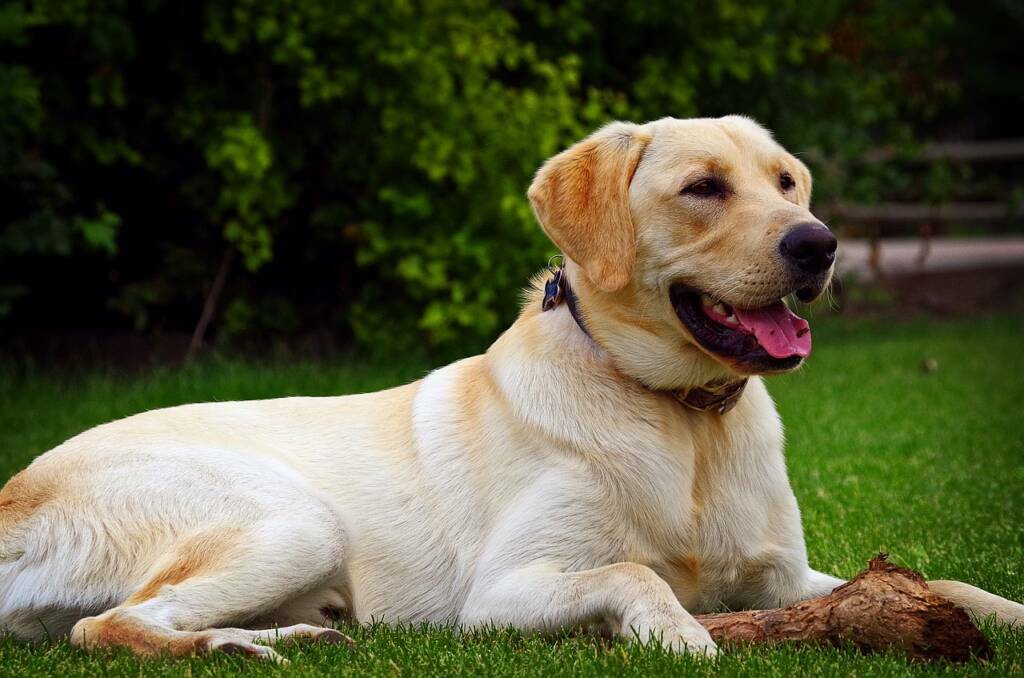Potty Training Guide: If you are a new puppy owner, one of the questions you may have right now is how to potty train a Labrador Retriever puppy. Training a Labrador (or any dog for that matter) to use the bathroom is one of the first major hurdles that every dog owner must overcome.
Labrador puppies can bring joy and stress to your home when they are first brought home. Puppy ownership is fun since you get to spend time with the animal. Nonetheless, there needs to be a great deal of maintenance.
Labrador puppies must go potty for the first time as part of their first training. This type of training may be called “house training” or another term, but essentially, it just means that your lab knows not to relieve themselves in inappropriate areas.
Puppy training can be a lengthy process. Getting a lab to understand what you are saying won’t happen overnight, and it won’t happen overnight. Dogs’ brains aren’t hardwired to understand.
Even if you get a well-trained puppy after only a few weeks, training your dog every day requires a lot of dedication. Training a puppy can take a lot of time and effort, especially at the beginning.
You will ultimately be glad that you chose to learn about potty training your Labrador puppy and to push through with their potty training at such a young age.
How does potty training a Labrador Retriever puppy help you?
Whenever possible, you should make sure that your Labrador behaves properly inside the house. Additionally, you should establish boundaries so that both you and the pet can feel comfortable while caring for them.
Lab puppies need to be toilet trained not only for obvious reasons but also because the younger they are, the less control they have.
You could end up with them peeing all over the place if you leave them unattended. The puppies of Labrador Retrievers may also go to the bathroom more than once in an hour since their bladders do not have a large capacity.
Additionally, dogs have a habit of peeing in the same area where they have urinated previously. The best time to start is as early as possible to prevent that habit from taking hold in your puppy. It is best to begin training your puppy as soon as it enters your home.
Potty spots
When you start training your lab puppy to potty, your first consideration should be where you eventually want her to relieve herself. You must define this area early on as you will be training your Labrador Retriever to use that area as a potty spot.
It is entirely up to you where this area is located. If you live in a house where you have your own space and where your lab can easily go outside without any problems, you should consider setting up an outside potty area.
Therefore, you won’t have to worry about smelling Lab poop or pee. There are owners of Labs who live in high-rise buildings that prevent their Labs from going outside immediately.
It would be most beneficial for those living in one of these buildings to create a potty area. As stated previously, you are entirely in charge of the location of the potty area. You need to determine what level of comfort your lab will find most comfortable and how you can meet that level of comfort.
Puppy potty training: How do you do it?
Potty training can be done by using tools. To make potty training easier, there are several potty training tools available on the market today. The materials can be used for various purposes, such as indoor potty pads and dog crates.
We recommend that you have these items on hand during the early stages of potty training your Lab puppy:
1. Cleaning products
Make sure you are prepared for any accidents your Lab puppy might have while potty training. Potty training will be challenging. Furthermore, if you want to save your furniture and carpets, you must always be prepared to clean them.
2. Puppy pads
Similar to paper, these pads work similarly. When the mess is concentrated in one place, you don’t have to clean a lot. Puppy pads are often scented in a certain way to encourage puppies to poop or pee in that area.
3. Scooper/bags for poops
Poop scoopers are used to scoop up poop, just as their name suggests. Mistakes will inevitably occur, so be prepared for them as much as you can.
Poo bags can also be used to clean up after your dog on the go when you’re walking outside.
4. Paper
As an alternative to puppy pads, paper is an inexpensive option. You can usually find them in your local newspaper. We hope this paper will help your lab understand that this area is specifically meant for you to relieve yourself.
5. Rewards
However, you should exercise caution. If you are potty training your Labrador puppy, you should not rely so heavily on compensation. Establishing a routine and rewarding them with treats are also important.
What is the best way to potty train my Labrador puppy?
There are many different approaches to potty training, just as there are many different aspects of training.
You will choose your approach based on what you are comfortable with and what fits into your lifestyle. You should choose a method for labrador puppy potty training that will maximize your efficiency.
Labrador puppy care
You need to pay constant attention to your Lab puppy at home if you want to potty train him effectively. It is vital to know when your dog is likely to poop or pee so you can take him outside. When puppies are young, their bladders tend to fill up quickly.
Keep track of when they urinated outside and how many minutes have passed. At least once an hour, young puppies should go to the bathroom. The biggest flaw in this method, in my opinion, is that it won’t work if you are too busy to pay attention.
Because of this, if you are a busy person and you are unable to pay close attention to your puppy, then you might as well choose another option.
Potty training a Labrador Retriever puppy: Crate Training
At first, crate training may seem intimidating, but it is a very effective method of potty training your Labrador puppy. Dogs don’t like soiling their sleeping areas, so when you crate train them, you are taking advantage of that instinct.
In this manner, your Lab will learn how to contain their bladders while they wait for you to let them out. However, take note that crate schooling is no longer a form of punishment.
Ideally, Labrador Retriever dogs should be left there for a few hours at most. Also, if you are too busy to pay the interest properly, it’s best to keep them there.
Also, the length of the crate is very crucial as it will determine whether or not or no longer your pup treat the complete place as a mattress or allocate a portion of it to be a peeing area.
Whenever they need to go potty, all you need to do is let them out of the crate and into their designated potty area.
How to potty train a Labrador Retriever domestic dog: Paper Training
It’s pretty simple to go to school on paper. Your domestic dog can be trained to best relieve themselves in a certain area of the house wherein the paper is laid down.
Then, gradually, you reduce the distance included by using paper and slowly move it until you reach the final potty location.
As a result, it might take some time and effort for your domestic dog to receive it properly, you should deliver it with your best effort. They’ll eventually realize that there is a designated potty area outside.
There are a few things you should remember when potty training your Labrador domestic dog:
1. Let yourself be affected
The procedure will no longer be conducted in a single day. Make sure you are patient and considerate during the procedure. It’s important to remember that they do not think as you do.
Since they cannot process your commands in the way you anticipate, you’ll have to have the expertise to have much better outcomes from your Labrador domestic dog potty training.
2. Punishment is counterintuitive.
Punishing your dog for not getting the stairs to Labrador domestic dog potty schooling proper is more of a hassle than a solution.
The second you punish your domestic dog for now not being aware of the pointers you purchased on how to train a Labrador domestic dog to potty, you are now not simply training them that relieving themselves in a particular location is bad.
By doing so, you’re teaching them that relieving themselves while you’re around is bad. Ideally, potty training should be for the mutual benefit of both the dog and owner and for most dogs, it should be relatively comfortable.
Studies on canine-human relationships found that rewards-based schooling is more canine-centric than conventional instruction.
3. Don’t take the treats too far
Do not allow your Labrador to become too dependent on treats. Instilling the right potty behavior in your dog shouldn’t depend on them, even though they’re beneficial for a short while.
4. Make it a habit to teach your Lab domestic dog to potty.
It is most important to organize a habit when potty schooling. It takes some time for a dog to understand that this is what they are supposed to do, so a habit is extraordinarily beneficial within the process.
Summary
Among the many questions, Lab owners and parents have about potty training their dog is how to teach your Labrador Retriever.
There are many products and gear readily available nowadays to assist you together with your Labrador domestic dog’s potty training.
In addition to the guidelines mentioned above, we have outlined some additional tips that can help you potty train your Labrador domestic dog.
Are Labradors hard to potty train?
You can begin training your Labrador Retriever puppy where to go potty and how to communicate his needs to you as soon as you bring him home.
How long does it take to potty train a Labrador puppy?
On average it takes us approximately 4-8 weeks to potty train a puppy. We’ve raised over a dozen puppies so if you’re a brand new puppy owner it may take you a bit longer as you get used to your new puppy and her potty routine and schedule.
How often should you take a 12 week old puppy out to pee?
Ability to Hold Urine – 12-week-old puppies can generally hold their urine for about 4 hours. This means you will need to take them out at least every 4 hours to get them “housebroken”.
Should a 12 week old puppy be potty trained?
How often does an 8 week old puppy pee?
This usually occurs between 8 and 10 weeks of age. The average puppy can hold his urine for the number of hours equal to his age in months plus one, according to the Animal Humane Society. Therefore, an 8-week-old puppy will urinate approximately every three hours and a 12-week-old puppy every four hours.
How often does a 10 week old puppy need to pee at night?
10 weeks old – take them to their bathroom spot every 45 minutes. 3 months old – take them to their bathroom spot every 1 to 1.5hrs.





